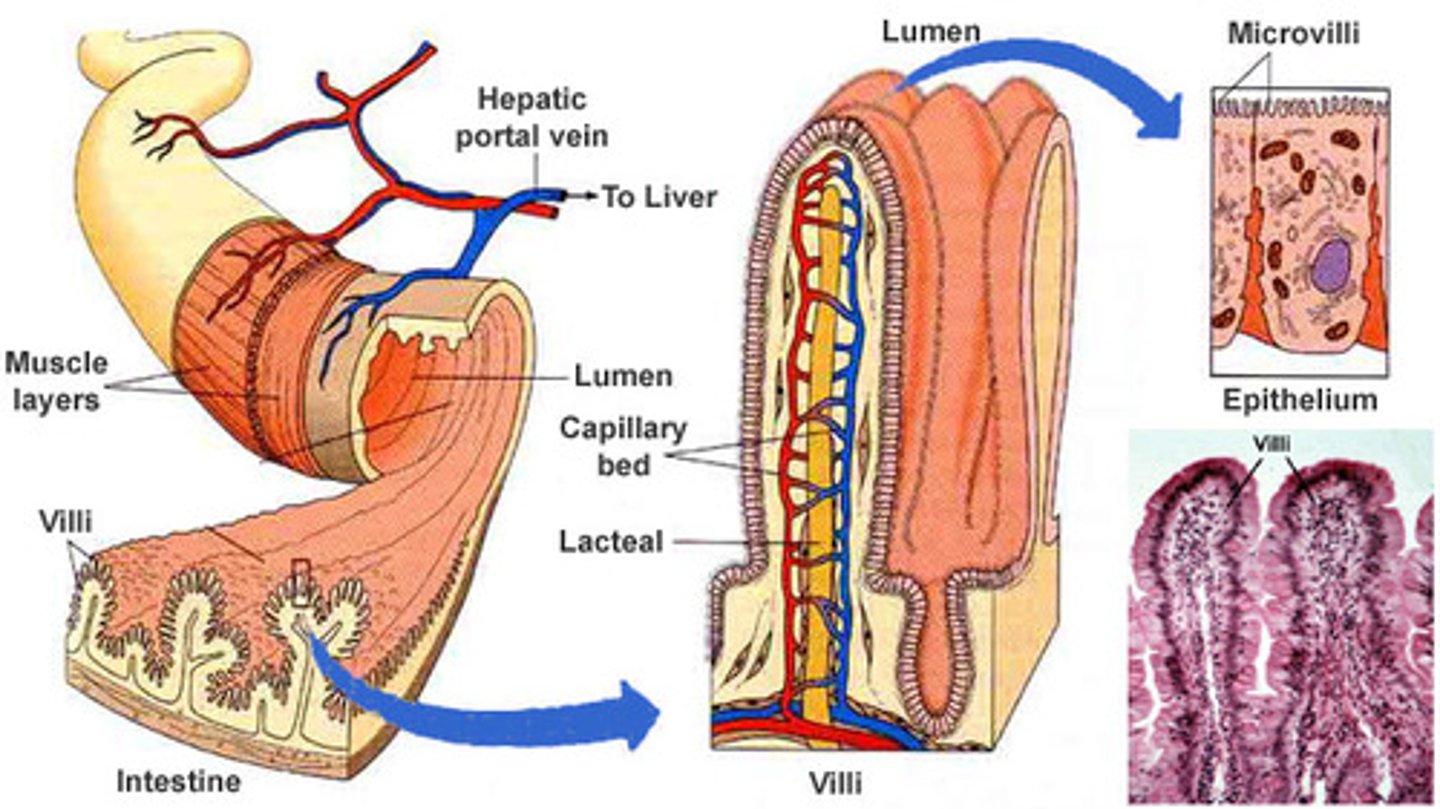s437 Small Intestine Digestion Flores
1/23
There's no tags or description
Looks like no tags are added yet.
Name | Mastery | Learn | Test | Matching | Spaced |
|---|
No study sessions yet.
24 Terms
Pancreatic amylase
Splits polysaccharide into disaccarides
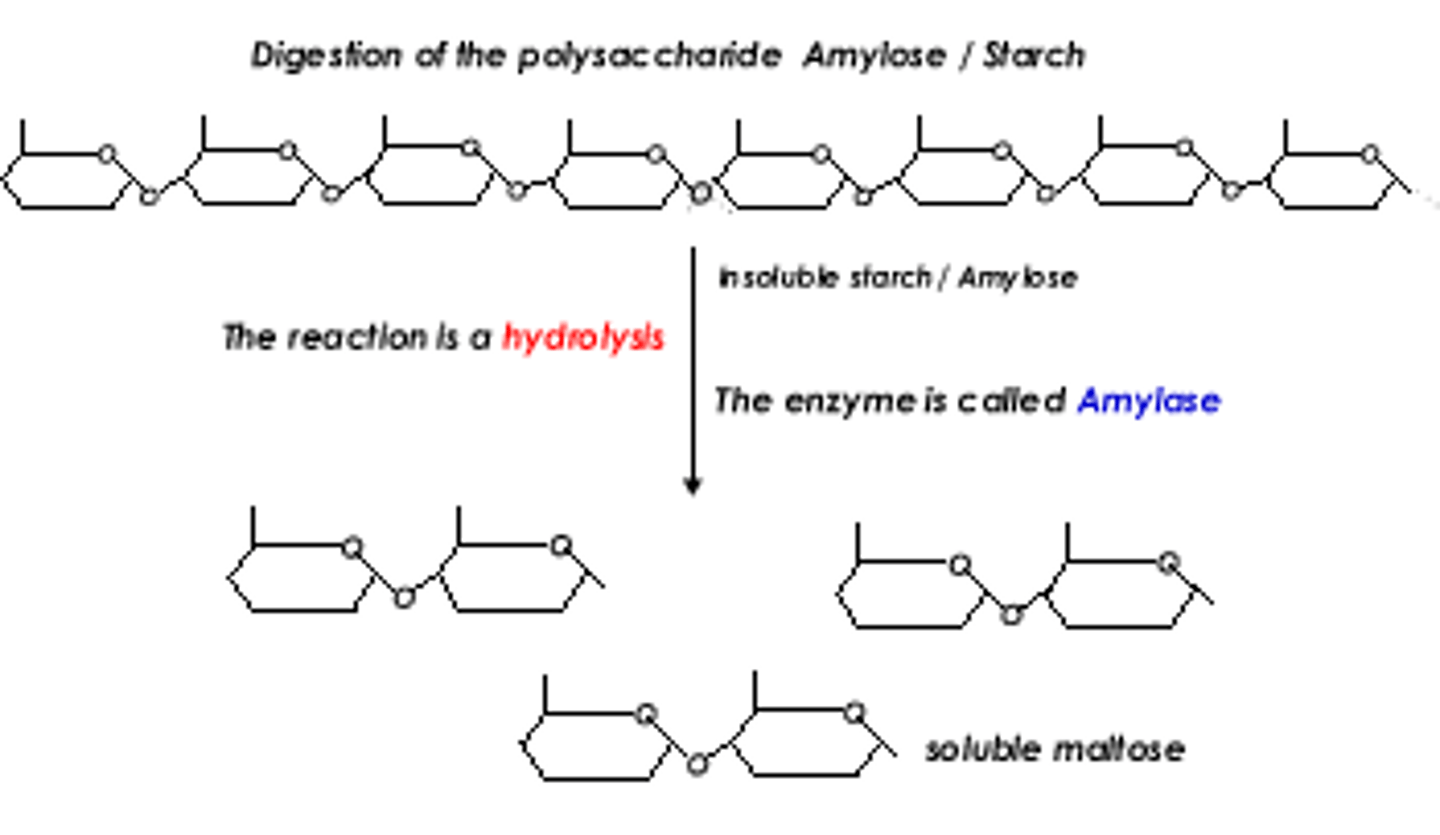
Pancreatic lipase
Fat-digesting enzyme; breaks down triglycerides into fatty acids and monoglycerides
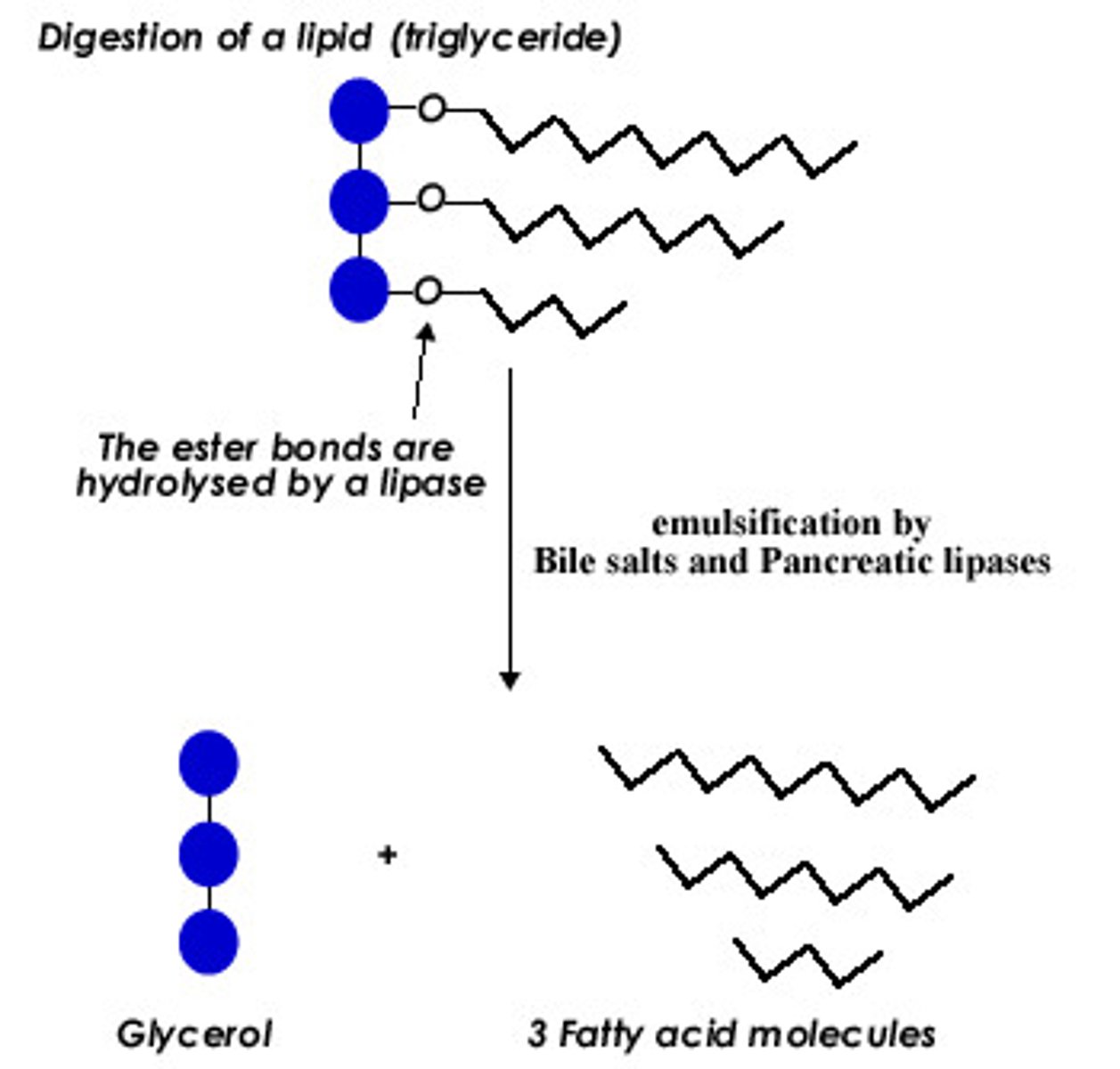
Pancreatic proteases
chymotrypsin and carboxypeptidase
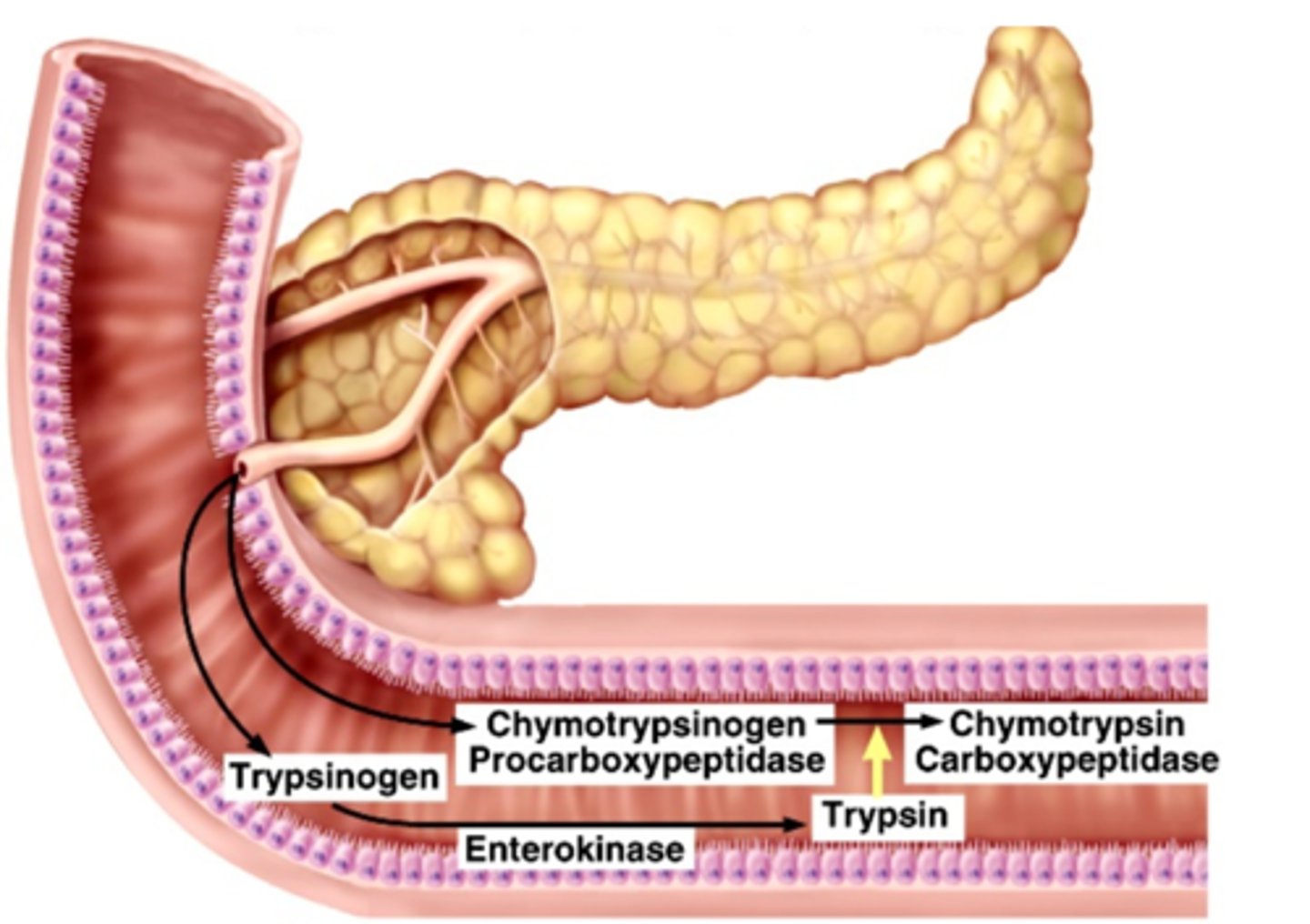
Trypsin
released as inactive tyrpsinogen, which is activated by enterokinase, activates chymotryposin and carboxypeptidase
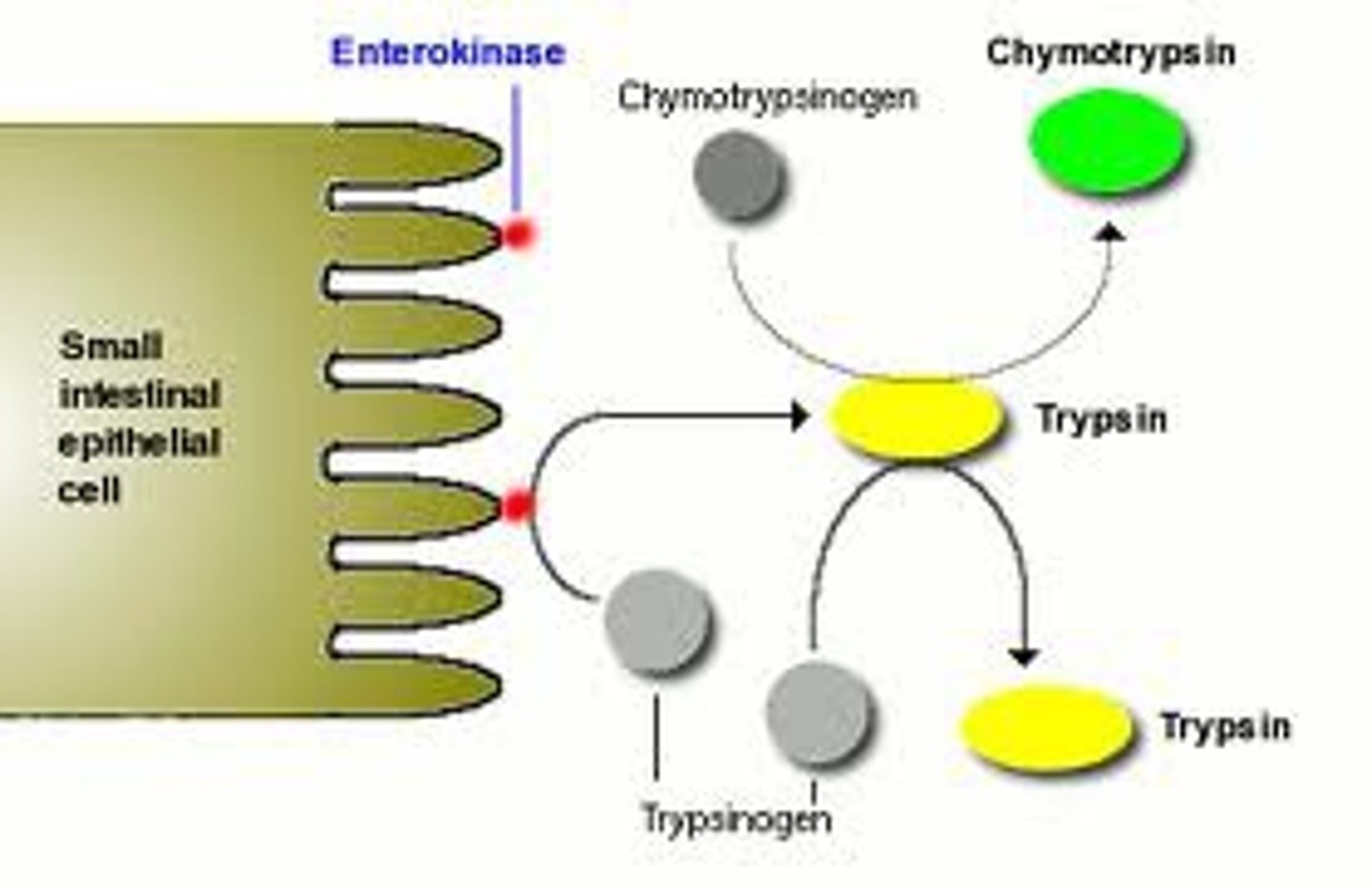
Chymotryposin
Digest proteins- released as inactive... activated by trypsin
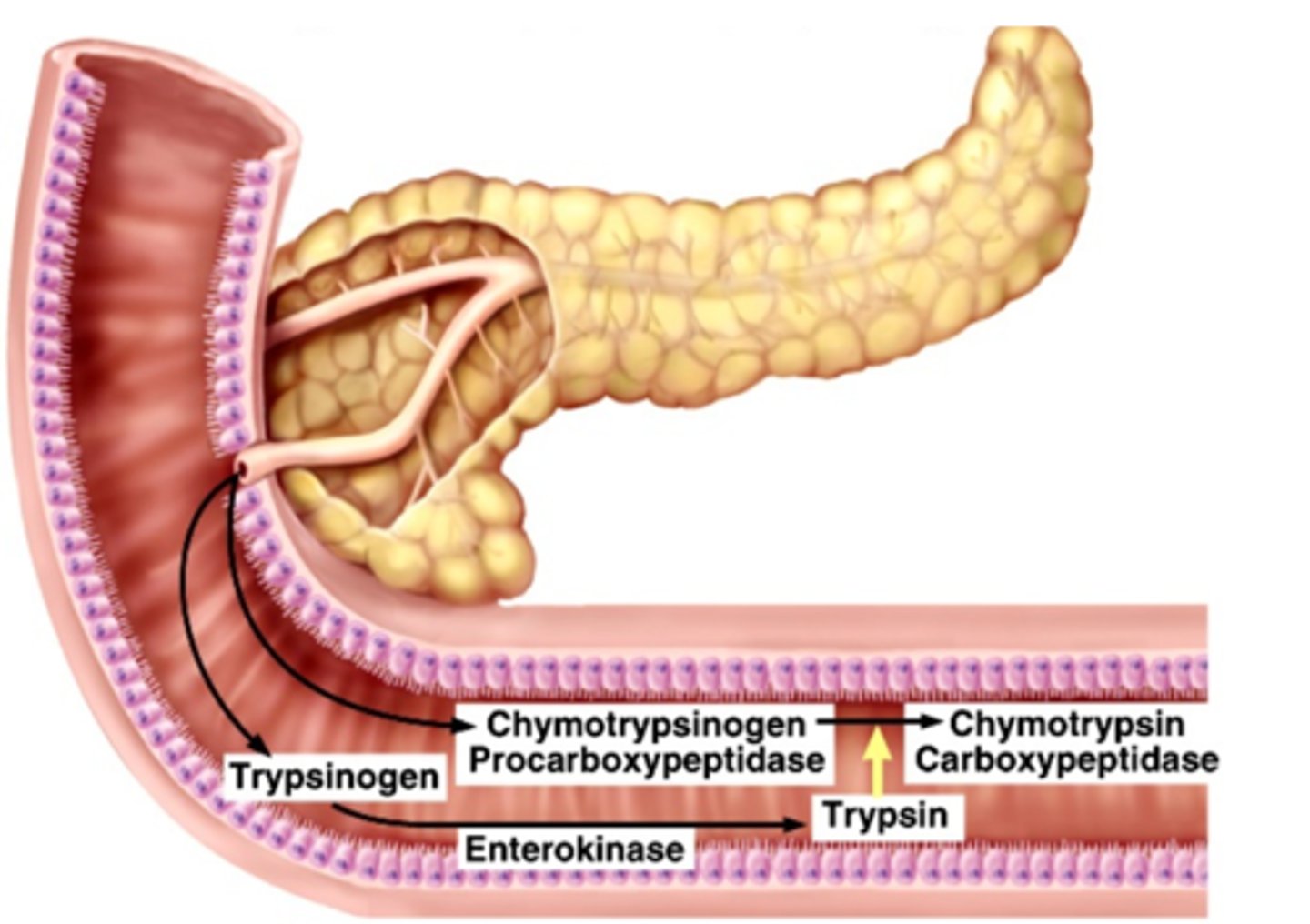
Carboxypeptidase
Digest proteins- released as inactive procarboxypeptidase... activated by trypsin

Nucleases
Digest nucleic acids
Bicarbonate ions
Make pancreatic juice alkaline; neutralize the acid in chyme

Trypsinogen
Released inactive, activated by enterokinase
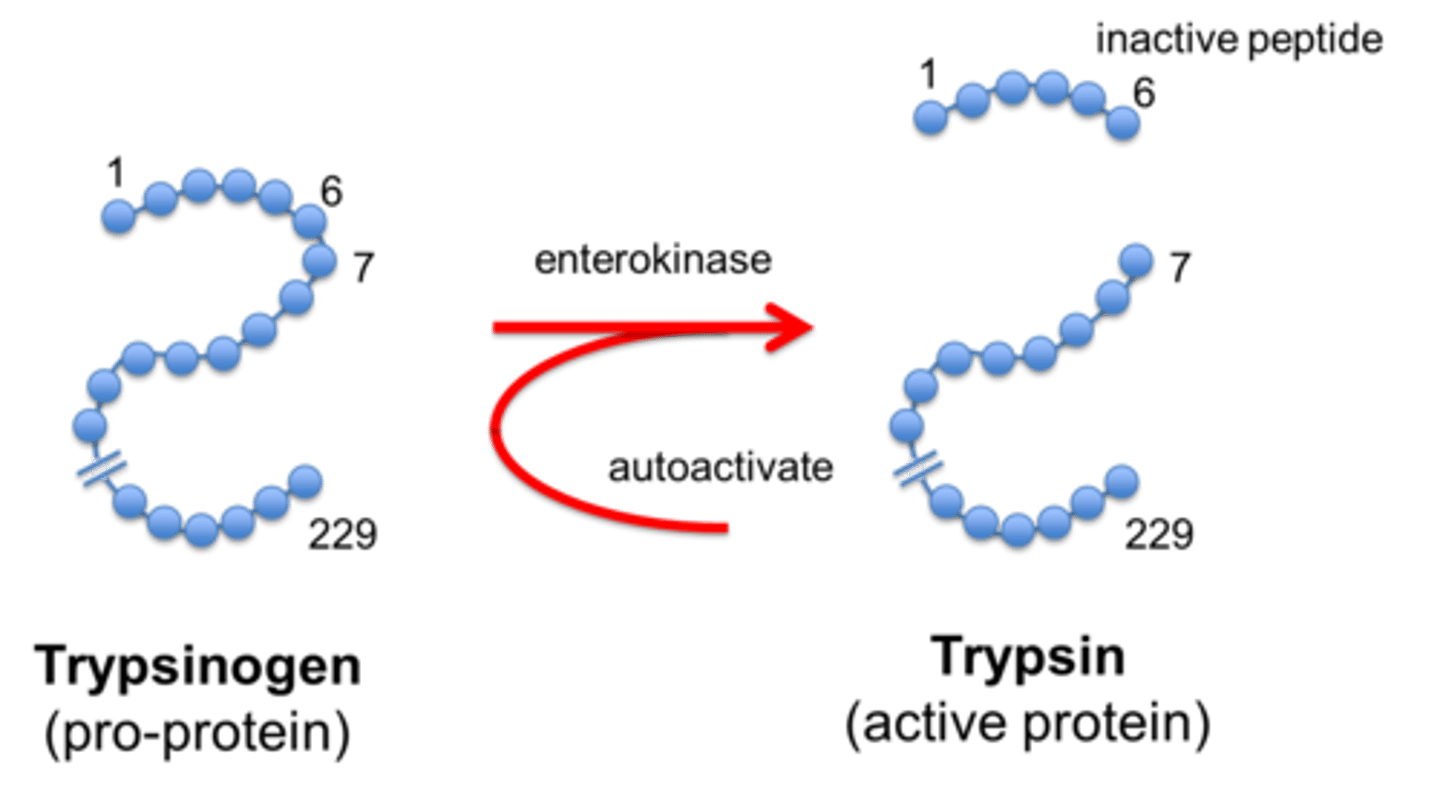
Brush border
Surface of a cell covered with microvilli. increases surface area of a cell for absorption
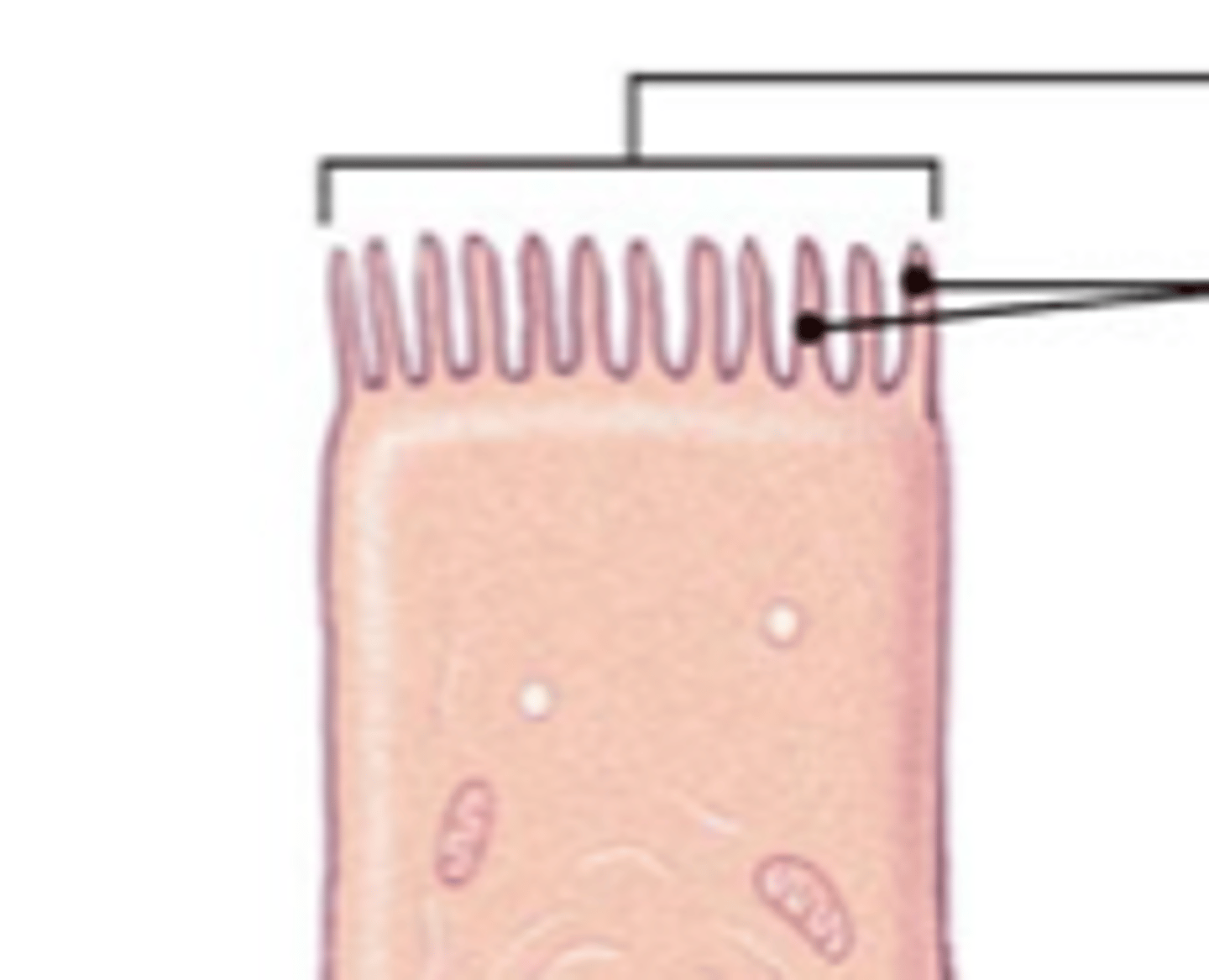
Brush border enzymes
Located in small intestine. Carry out final stages of enzymatic digestion. Maltase, Lactase, Sucrase, Lipase, Protease, nuclease
Maltase
breaks down the disaccharide maltose
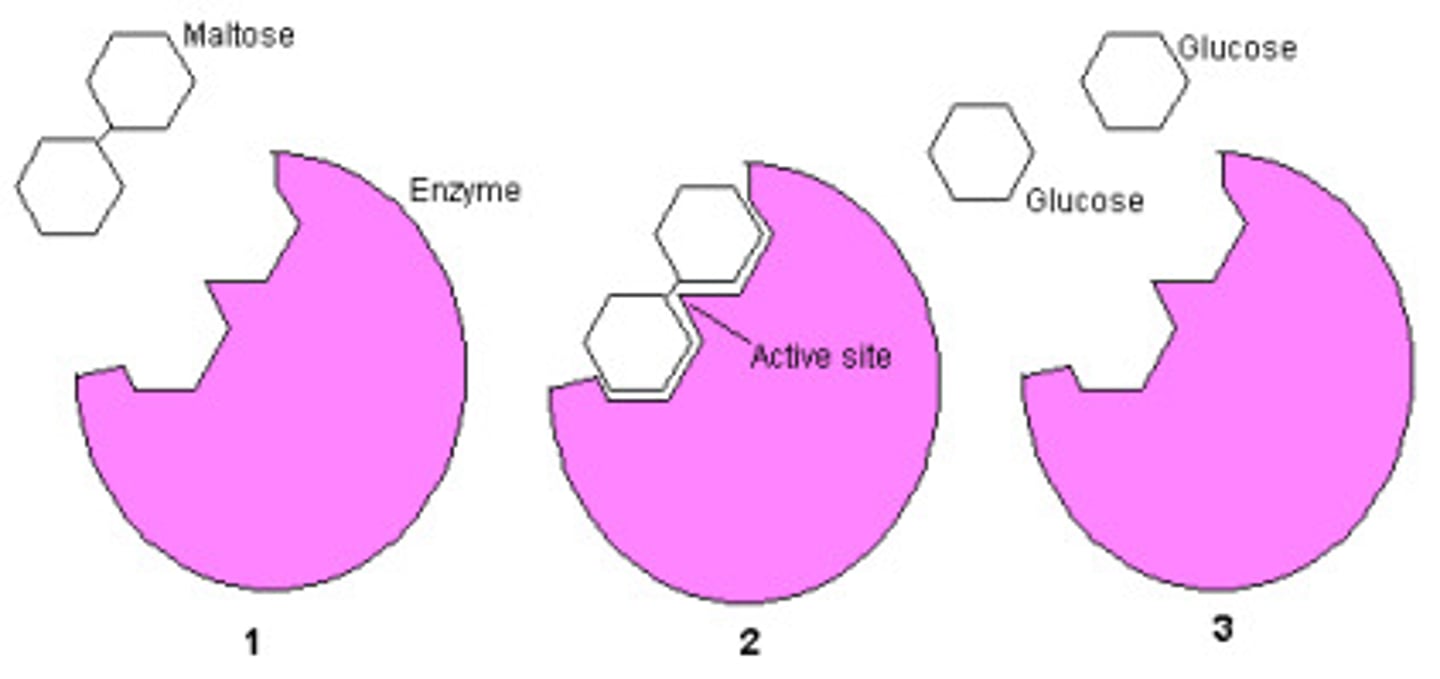
Lactase
breaks down the disaccharide lactase

Sucrase
breaks down the disaccharide sucrose
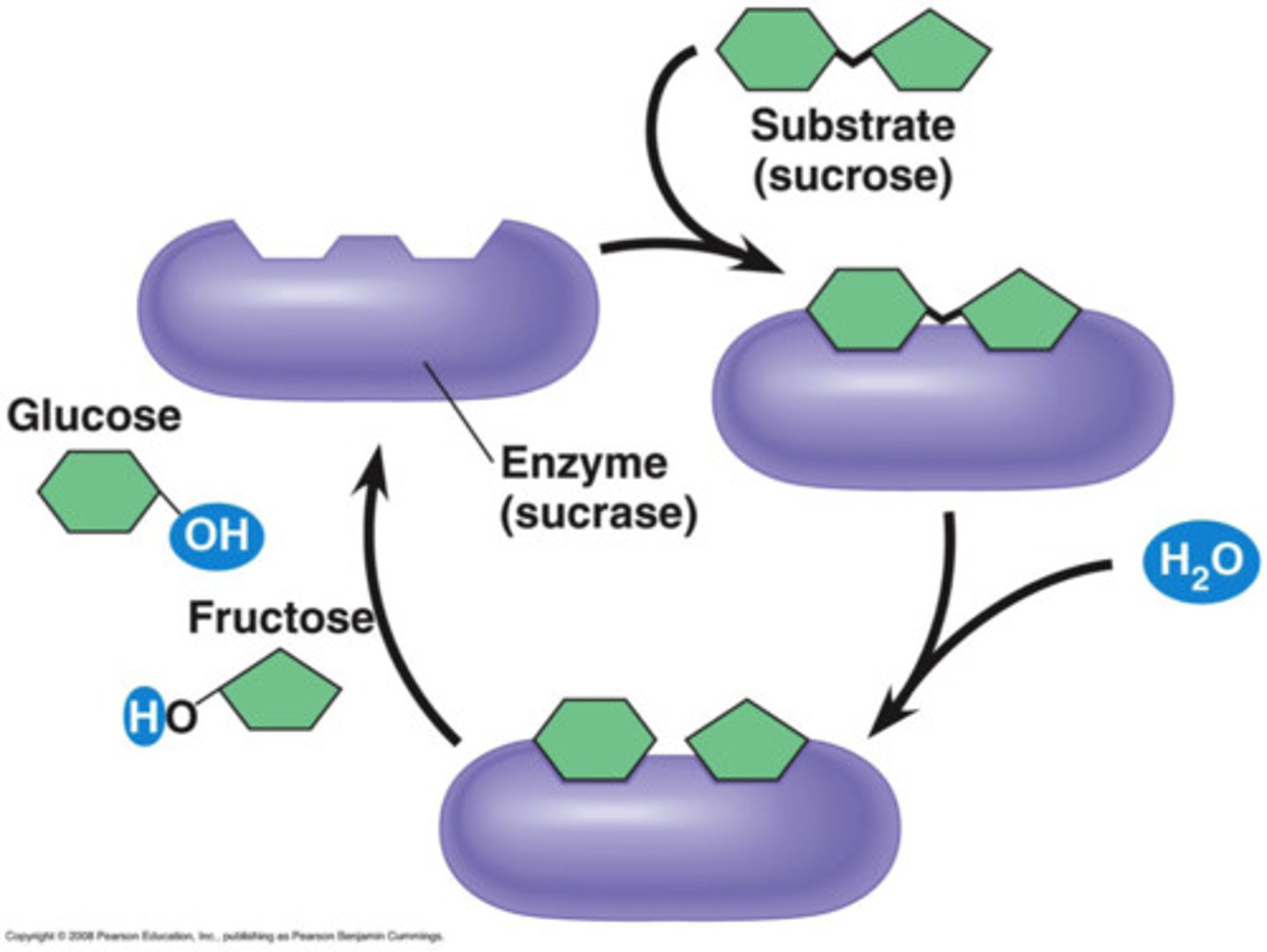
parts of the small intestine
duodenum, jejunum, and the ileum
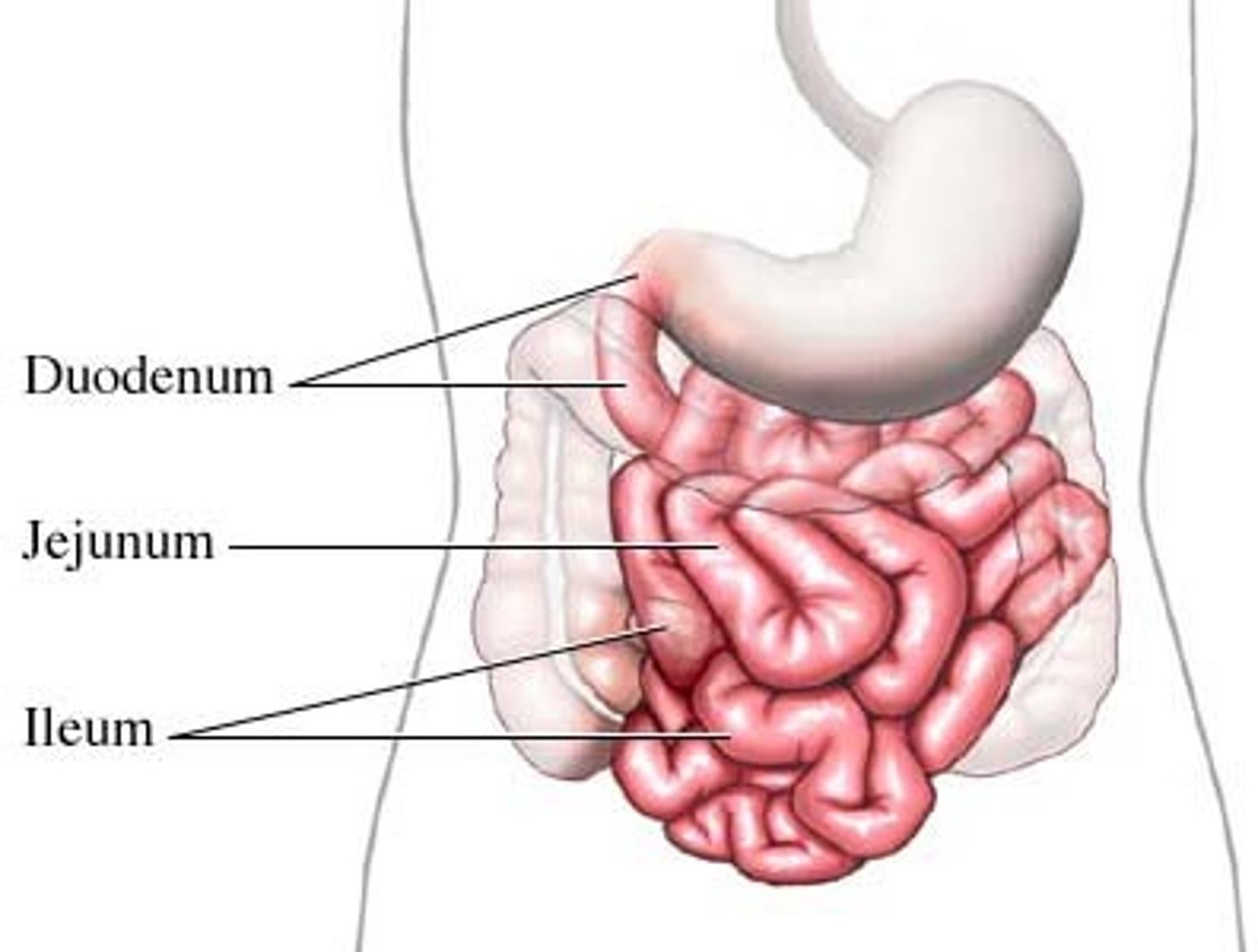
duodenum
The first part of the small intestine
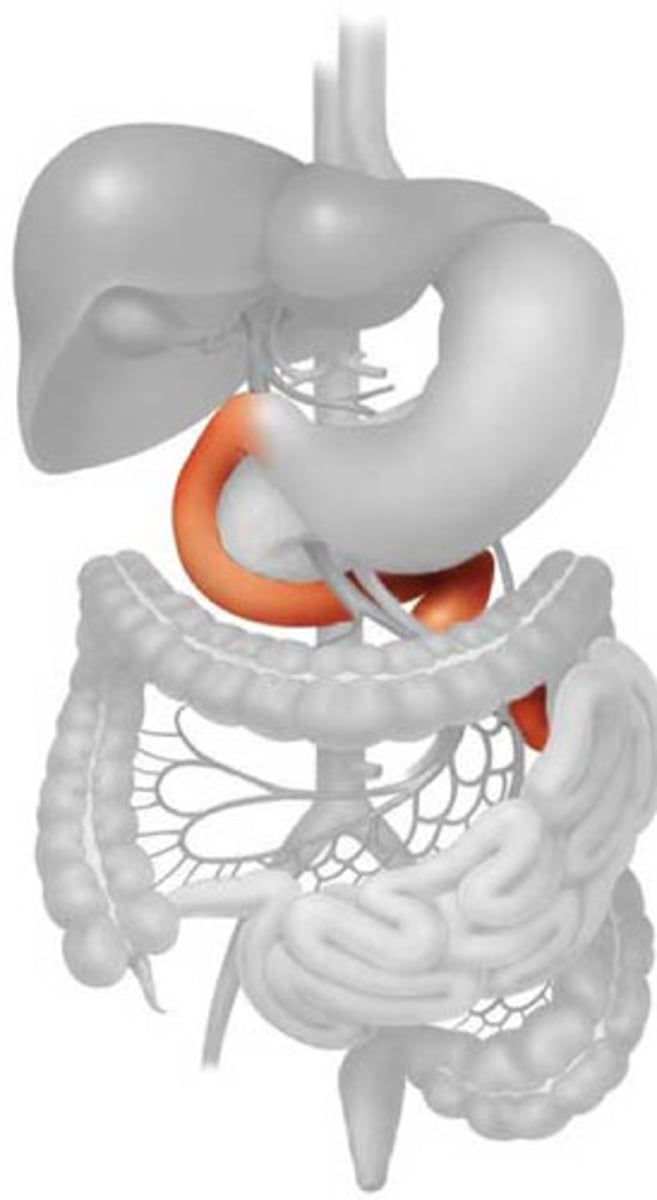
zymogen
A protein that is an inactive precursor of an enzyme
Catalase
Enzyme found in the liver, breaks down hydrogen peroxide into water and oxygen
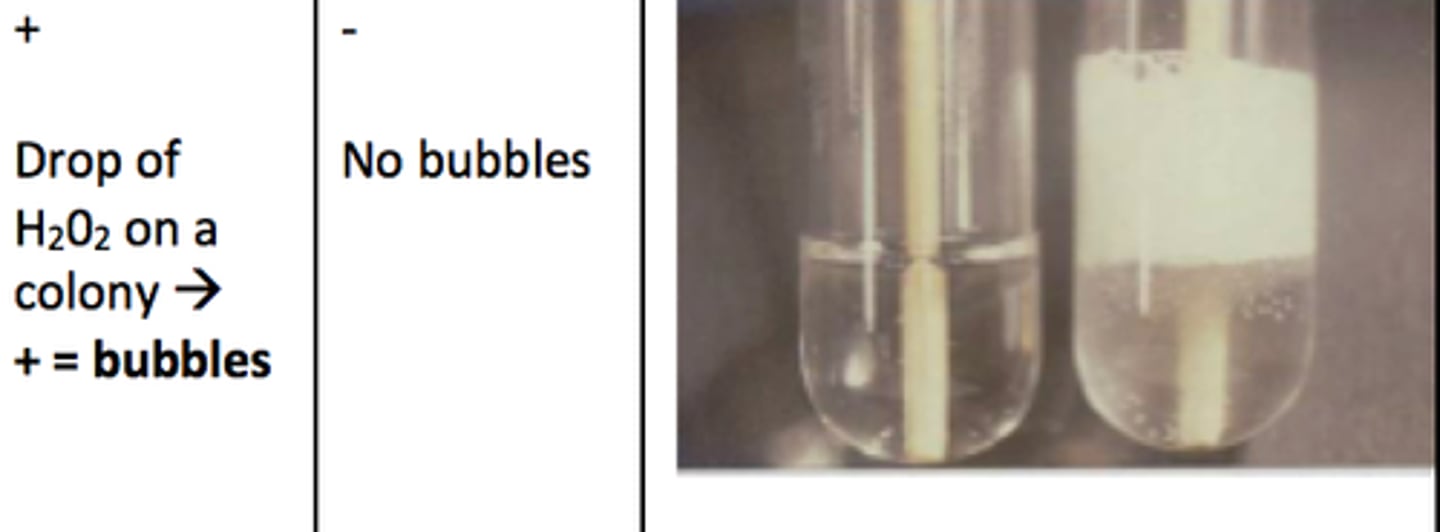
pH of pancreatic juice
8
CCK
Stimulated by fat and proteins in the small intestine, increases pancreatic enzymes, and stimulates the release of bile by contracting the gall bladder
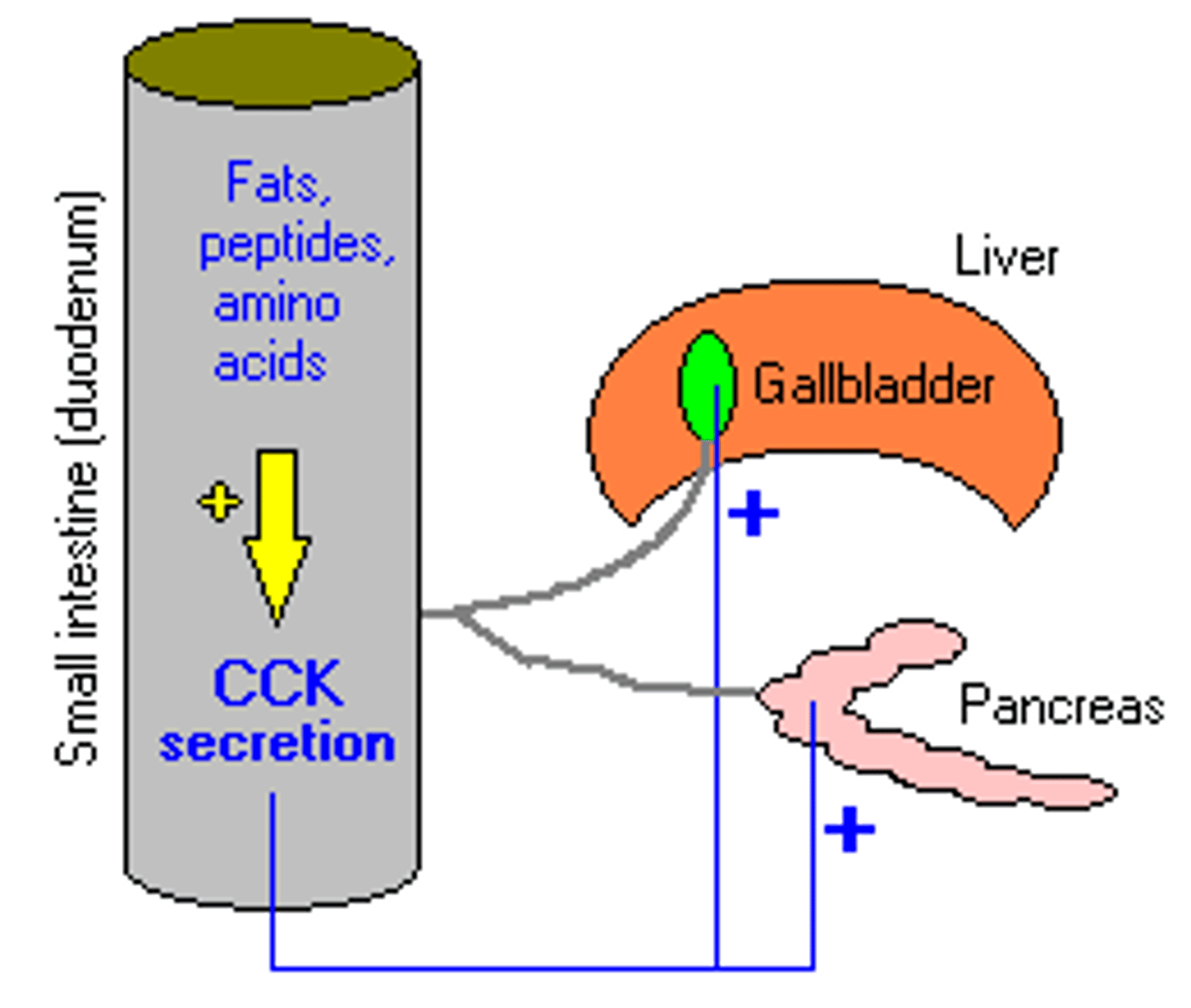
Secretin
A hormone secreted by the small intestine (duodenum) in response to low pH (e.g., from stomach acid). It promotes the release of bicarbonate from the pancreas to act as a buffer.
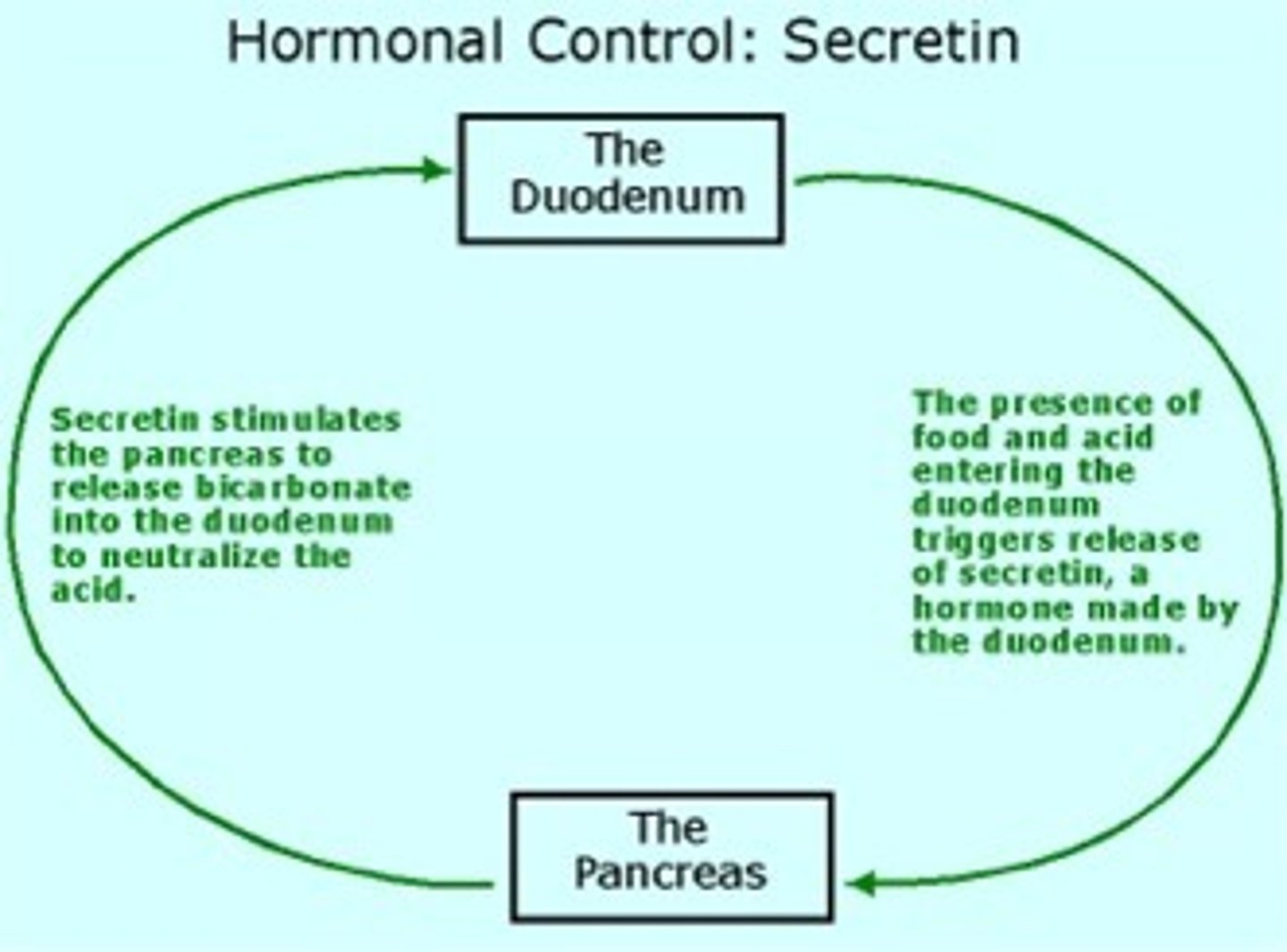
hepatopancreatic sphincter
the muscle that controls the emptying of bile and pancreatic juices into the duodenum; may also be referred to as the sphincter of Oddi
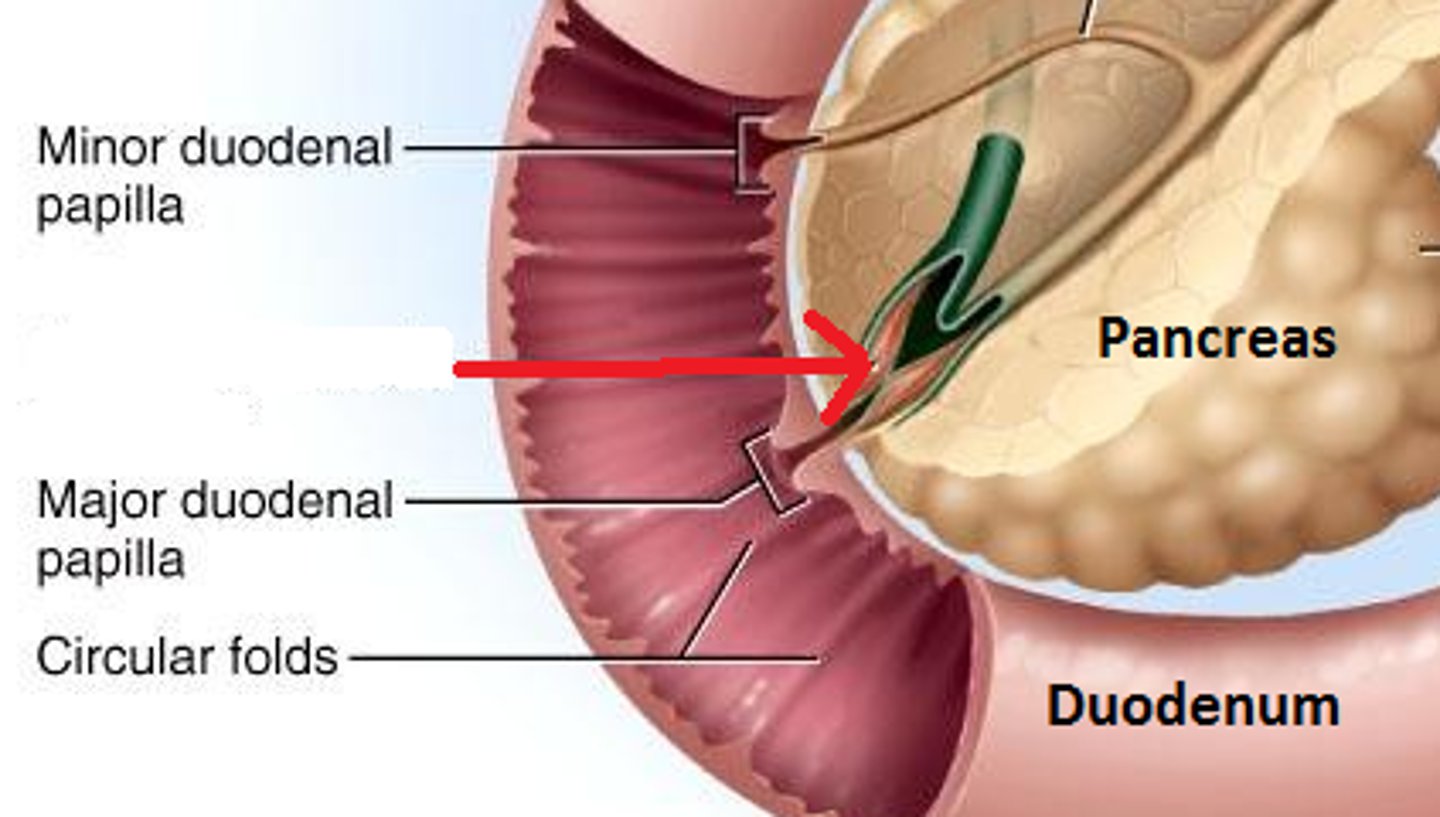
villi
Fingerlike extensions of the intestinal mucosa that increase the surface area for absorption
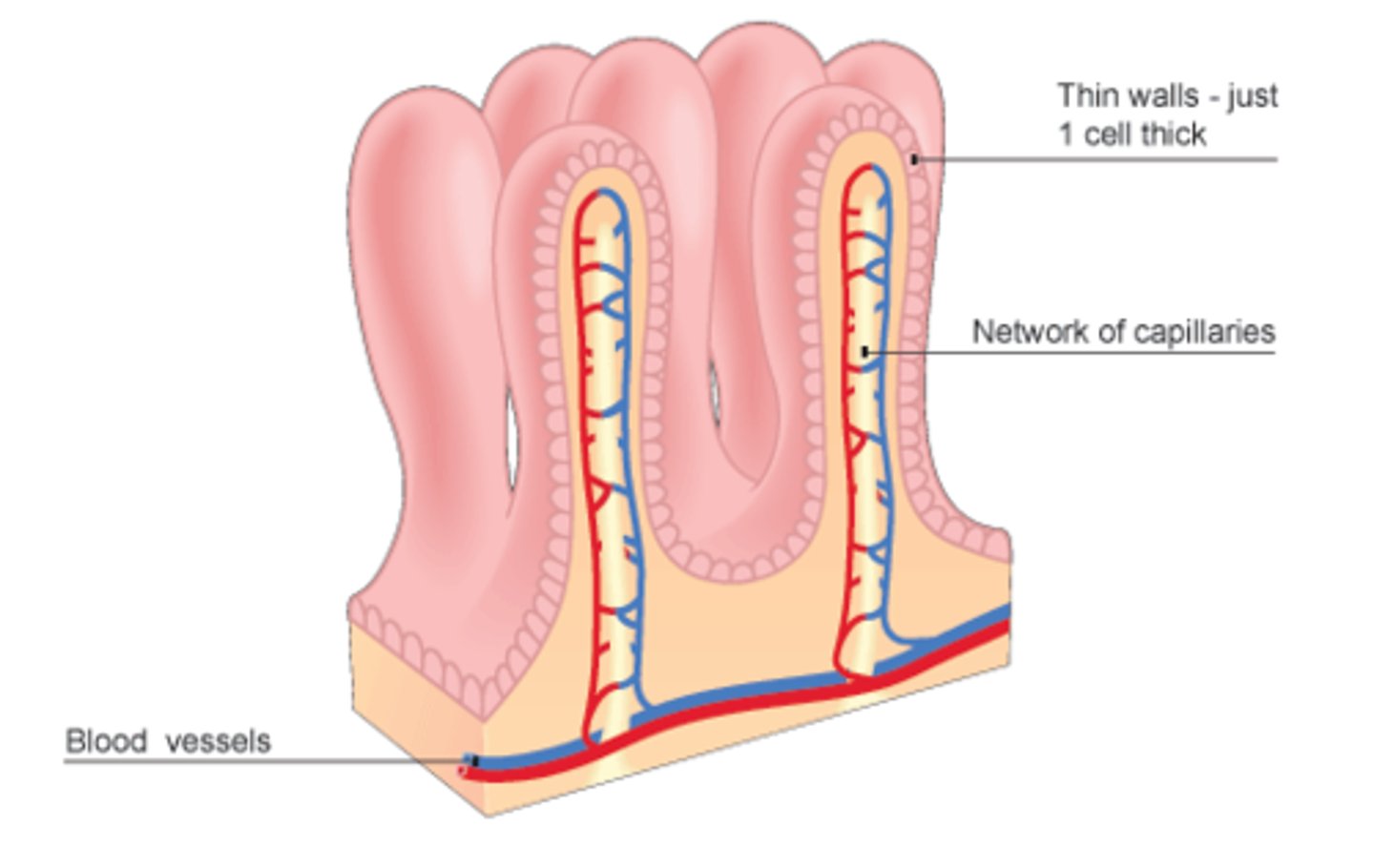
Microvilli
Fingerlike extensions of plasma membrane of apical epithelial cells, increase surface area, aid in absorbtion, exist on every moist epithelia, but most dense in small intestine and kidney
